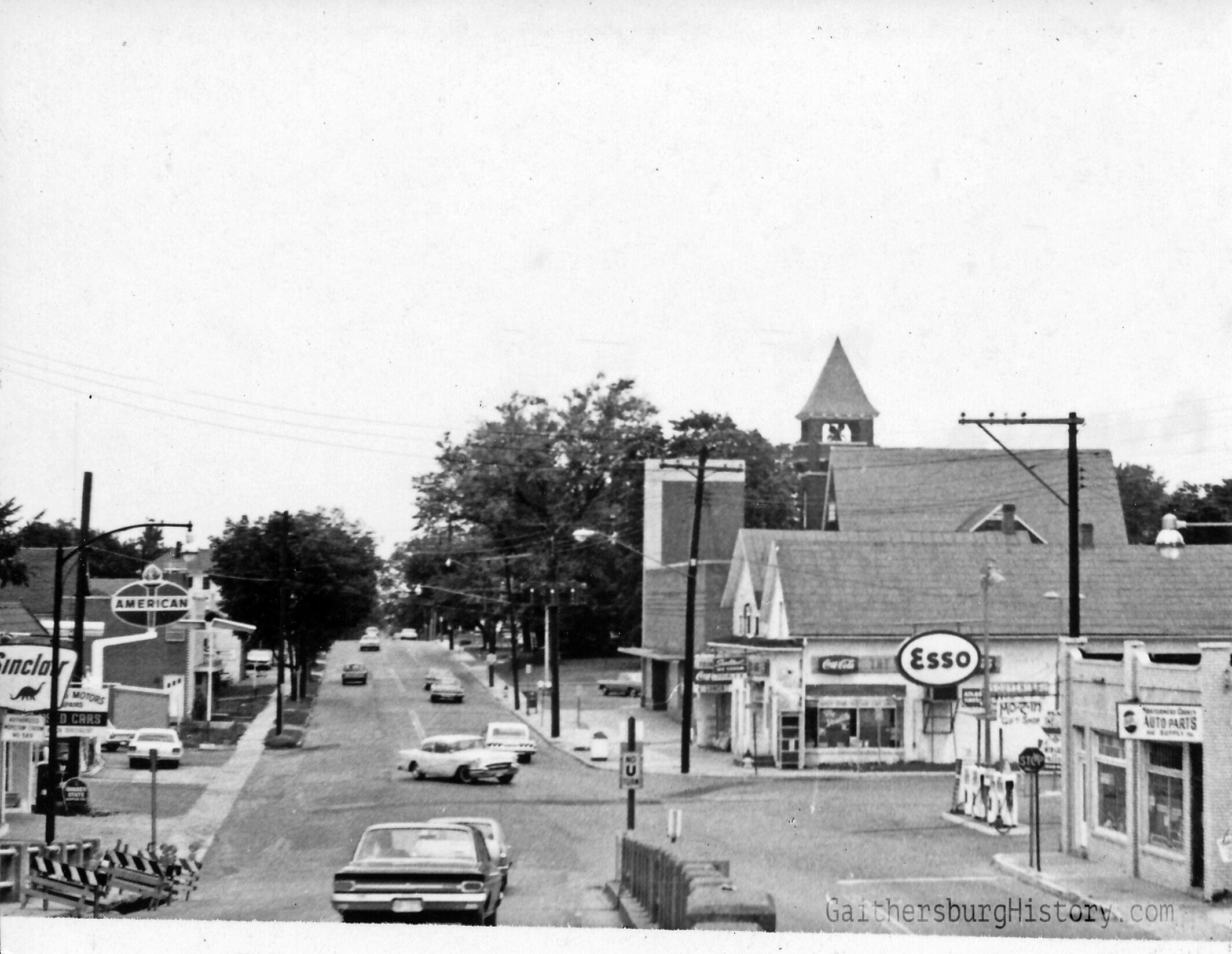

These photographs essentially mark the spot where Gaithersburg began. In the mid 1750s, Henry B. Brookes amassed a large plantation of more than 1,000 acres. His son-in-law, Benjamin Gaither, settled on his wife’s dower property near the intersection of present-day Diamond and Frederick Avenues before 1800. Gaither started a blacksmith shop, store, and tavern to serve travelers and locals. His crossroads enterprise became known as Gaithersburg. Archived Comments


The Gloyd house was a large Victorian home built onto the original Benjamin Gaither house. Note Gaither's old fieldstone chimney on the left side of the Gloyd home. During the Civil War, as Union and Confederate forces passed through Gaithersburg, the Gloyd home was used as a hospital for the wounded. By the late 1950s increasing commercial development made the property less desirable as a residence, and the home was sold to the telephone company. The house was demolished in 1958. Archived Comments


Carson Ward opened his general store at 101 North Frederick Avenue around 1890. The building served as Town Hall in 1912 and the second story was even used as a public library. Although this building has been extensively rebuilt by its owner, Mattress Discounters, care was taken to preserve the appearance of the building. The photo on the left was taken in 1919. Archived Comments


This old photo of Frederick and Brookes Avenues was snapped by E. Russell Gloyd on February 19, 1956. During this time, Bill Reber operated a store and soda fountain in the original Ward Store building. Also pictured here is Ward's Service Station and the Safeway, which moved a half mile north on 355 not long after the old photograph was taken. Archived Comments


In the 1920s, the Bowman brothers of Germantown built a mill on Diamond Avenue that was in operation until the late 1960s. Today, the old mill has been preserved into Granary Row, complete with shops, a restaurant, and an automotive service center. Archived Comments


The First National Bank of Gaithersburg was built in 1891. Although the bank has lost its original steepled roofline, if you look close enough you will find that many parts of the building have not changed in over 100 years. Archived Comments



